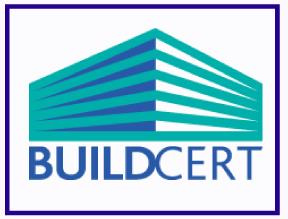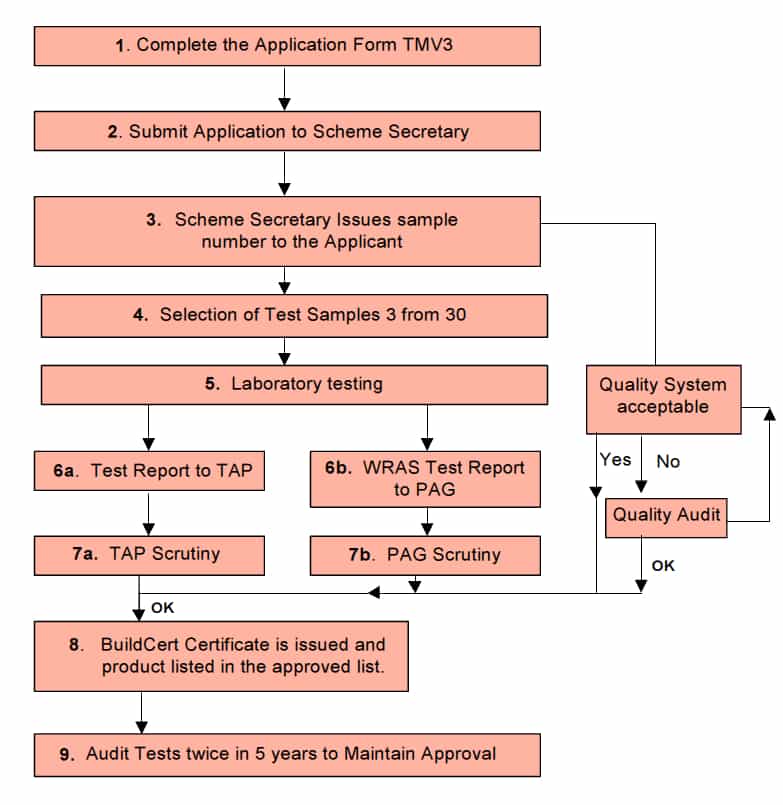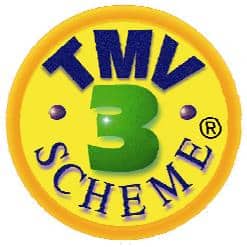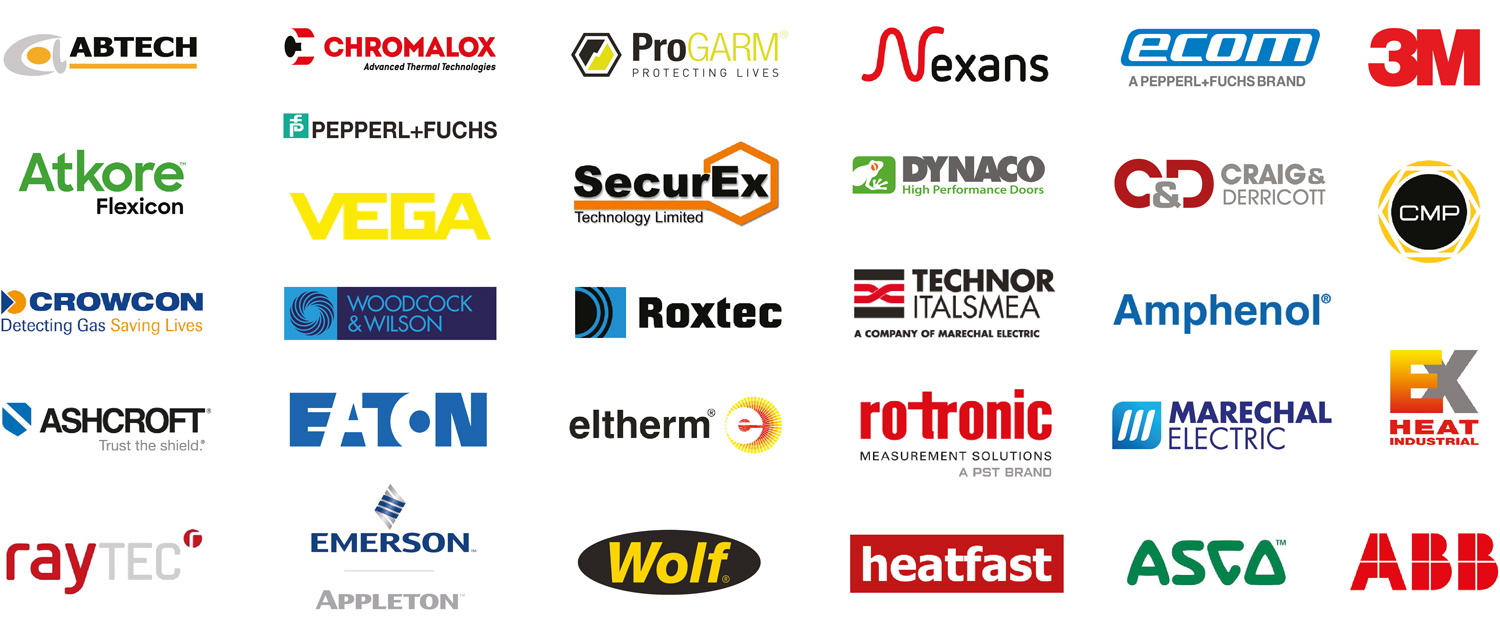Thermostatic Mixing Valves – TMV3 Approval Guide for Mixing Valves
Published 23 Sep 2016
Thermostatic Mixing Valves – The Easy Guide to TMV3 Approval
- By Chris Dodds : estimated reading time 8 minutes
NHS Estates together with manufacturers of TMV’s (thermostatic mixing valves) co-operated to establish a Third Party Certification scheme (TMV3 Scheme) – the Scheme tests and certifies TMV’s for enhanced thermal performance and shut-off for specific applications as described in the NHS Estates Model engineering Specification D08.
An installed approved mixing valve will only be regarded as continuing to satisfy the requirements of the TMV3 Scheme providing the supply conditions, commissioning and in-service test requirements are as stipulated by manufacturers of the valve.
1. Introduction
BuildCert approves two categories of Thermostatic Mixing Valves; TMV2 and TMV3. The different valve types are shown below.
TMV3 approval is for thermostatic valves for use in Healthcare and Commercial situations. It certifies that the valves it approves conform to the performance requirements of NHS specification D 08.
Types of valves:
- Type 1 – A mechanical mixing valves with maximum temperature stop (including single lever taps).
- Type 2 – A thermostatic mixing valve which conform to BS EN 1111 and BS EN1287 (originally BS 1415 Part 2). These can have a maximum temperature stop.
- Type 3 – A thermostatic mixing valve with enhanced thermal performance complying with NHS Estates requirements.
1.1. Pre-approval requirements
The BuildCert approval Scheme requires the following as a pre-requisite for approval.
- All manufacturers and factors must have ISO 9001 accreditation covering valve manufacture, production and handling or be audited by a BuildCert appointed Auditor.
- All BuildCert approval holders must become a member of the BuildCert Scheme.
- The Scheme requires three test valves be selected from a batch of 30 production valves. Valve selection may be undertaken by an independent 3rd party (if this is the case then BuildCert will require a signed declaration from that 3rd party).
- The Installation and Maintenance documents (I&M) must include information stated by the Scheme (see Section 5).
- Upon gaining approval the valve must meet the Schemes audit requirements (performance tested twice within the 5 year approval period).
Manufacturers of Thermostatic mixing valves can demonstrate compliance with the BuildCert quality requirements by supplying the Scheme with a copy of a valid ISO 9001 certificate and scope of accreditation or an approved quality system. Where this cannot be supplied a quality audit will be conducted by the scheme to verify compliance with the requirements of the Scheme.
A Primary factor is a company/individual who does not manufacture the valve but distributes a certified valve under his own trade name, the product having only cosmetic changes. An approval for the primary factor is sometimes referred to as a piggyback approval.
1.2. Recommended maximum mixed water outlet temperatures TMV3
The BuildCert/TMV Scheme recommends the maximum mixed hot water temperatures for safe use for the installations below.
- 44°C for bath fill (46°C for assisted bathing)
- 41°C For shower applications.
- 38°C For bidet applications
1.3. Operating conditions
Type 3 Thermostatic Mixing Valves are suitable for use when the hot and cold water supplies to the valves are within the limits specified for each operating range and where the mixed water temperature is set during commissioning at the appropriate temperature for its intended use (designation) see table below.
Only thermostatic mixing valves with no user-accessible adjustment of the mixed water temperature should be used where more than one outlet may discharge simultaneously when operated by more than one user at the same time.
Type 3 Thermostatic mixing valves having user-accessible adjustment may not be used for supplying two different maximum mixed water temperatures, e.g.
Shower/Bath Mixers unless the movement of the diverter mechanism or some other device will automatically adjust the temperature to the maximum mixed water temperature allowed for that mixed water outlet.
The maximum nominal size of mixing valves covered by this standard is DN25.
| Conditions For Normal Use | ||
| High Pressure | Low Pressure | |
| Maximum Static Pressure | 10 bar | 10 bar |
| Flow Pressure, Hot & Cold | Between 1.0 and 5.0 bar | Between 0.2 and 1.0 bar |
| Hot Supply Temperature | Between 52ºC and 65ºC | Between 52ºC and 65ºC |
| Cold Supply Temperature | Between 5ºC and 20ºC | Between 5ºC and 20ºC |
1.4. Designation
Some valves will be suitable for a number of purposes (or across a range of designations).
| Designation Codes | ||
| HP-B | High Pressure | Bidet – Maximum Temperature 38ºC |
| HP-S | High Pressure | Shower – Maximum Temperature 41ºC |
| HP-W | High Pressure | Washbasin – Maximum Temperature 41ºC |
| HP-T44 | High Pressure | Bath with fill temperature up to 44ºC |
| HP-T46 | High Pressure | Bath with fill temperature up to 46ºC (Assisted bathing) |
| HP-D44 | High Pressure | Bath with fill temperature up to 44ºC and shower up to 41ºC |
| HP-D46 | High Pressure | Bath with fill temperature up to 46ºC (Assisted bathing) and shower up to 41ºC |
| LP-B | Low Pressure | Bidet – Maximum Temperature 38ºC |
| LP-S | Low Pressure | Shower – Maximum Temperature 41ºC |
| LP-W | Low Pressure | Washbasin – Maximum Temperature 41ºC |
| LP-T44 | Low Pressure | Bath with fill temperature up to 44ºC |
| LP-T46 | Low Pressure | Bath with fill temperature up to 46ºC (Assisted bathing) |
| LP-D44 | Low Pressure | Bath with fill temperature up to 44ºC and shower up to 41ºC |
| LP-D46 | Low Pressure | Bath with fill temperature up to 46ºC (Assisted bathing) and shower up to 41ºC |
| Key | ||
| B – Bidet, S – Shower, W – Washbasin, T – Tub (Bath), D – Diverter, HP – High Pressure, LP – Low Pressure | ||

Thermostatic Valves, Taps & Showers From Thorne & Derrick, contact us.
2. Full approval
- Complete and return the form TMV3 to BuildCert along with the Installation and Maintenance document, ISO 9001 documentation and scope of accreditation for the manufacturer and the applicant.
- Arrange the WRAS approval of the valve.
- BuildCert will inform the applicant in writing of the allocated BuildCert sample number and either request verification of issues or request sample valves for test, an administration invoice will be appended.
- The applicant sends test sample valves to the test house.
- The test house undertakes the mechanical testing.
- The test house will forward the test report and the test sample valve B to BuildCert.
- The test report, sample valve and documentation will be presented to the BuildCert Technical Assessment Panel (TAP) for verification and agreement.
- An approval letter, Certificate and invoice will be forwarded to the applicant, as appropriate.
- The valve details will be entered into the approved valve list on the BuildCert website.
3. Factored approval (piggyback)
- Complete and return the form TMV3 to BuildCert along with the installation and maintenance document and the ISO 9001 documentation with scope of accreditation for the manufacturer and the applicant. Also enclose a completed WRAS F2 application form.
- BuildCert requires a letter from the original license holder giving consent for the applicant to use the original TMV approval. The letter must state the original BuildCert and WRAS approval numbers. A written statement is required that the existing approved product and the piggyback product are identical in all respects except identification and or handle variants.
- BuildCert will then inform the applicant in writing of the allocated BuildCert sample number and either request verification of issues or request a sample valve for verification, an administration invoice will be appended.
- The applicant will send a sample valve to BuildCert.
- The sample valve and its documentation will then be presented to the BuildCert Technical Assessment Panel (TAP) for verification and agreement.
- WRAS Approval will be arranged.
- An approval letter and Certificate and invoice will be forwarded to the applicant.
- The valve details will be entered into the approved valve list on the BuildCert website.
4. Flow chart of full TMV3 approval

5. Information to be included in the Information and Maintenance documentation
The following points are to be included in Installation and Maintenance (I&M) Documents.
- Information upon the designation of use i.e.HP-T46, LP-S etc.
- Information upon the commissioning of the valve. This will include:
a. Operating pressures for the valve.
b. The water supply temperatures for the valve.
c. Method of adjusting the mixed water temperature.
d. Method for commissioning the valve.
e. Mixed water temperature.
f. Method for performing the In-service tests. - To facilitate the information required in 2) a) b) and e) and to present the information in a standardized fashion, the relevant information contained in Tables 1 and 2 in the NHS document D08 is to be included in a tabular format within the I & M documentation.
- Information upon the frequency of in-service tests and service work.
- Information on the Backflow prevention devices that will be fitted, including the specification of the Backflow preventer, i.e. size, type and position (inbody / handset / hose / tail / servicing valve). If the Backflow preventer is not supplied as part of the package then details of the type of device to be used are to be specified
- Position of isolating valves if provided, if not provided the need for isolation valves and their position when fitted.
- Position of strainers if provided, if not provided their position if fitted at the time of installation.
- Inclusion of temperature differential characteristics of the valve.

Click HORNE TMV’s for complete specifications, product data, installation guidelines and ordering information about Thermostatic Mixing Valves.
➡ See also: Mixing Valves – How Do Thermostatic Mixing Valves (TMV’s) Work?
Invitation – network, engage, promote
Thorne & Derrick are inviting you to join LinkedIn’s fastest growing Discussion Group – Process & Hazardous Area Industries : Heat Tracing, Gas Detection, Fluid Control & Flow Measurement. News, projects, videos, promotions, whitepapers, jobs, webinars, press plus much more. 

ABOUT US
Thorne & Derrick International are your single-source supplier of Electrical, Mechanical, Process & Instrumentation Equipment. T&D provide an outstanding service to UK and international customers – we are highly customer responsive and absolutely committed to providing a world-class service.
T&D supply utilities, power, renewable energy, construction, rail, manufacturing, food/beverage, mining, oil, gas and petrochemical industries – distributing 100,000+ products from 100+ manufacturers from multi-million pound stocks. Since 1985 we have established a solid reputation based on service, integrity and trust.


